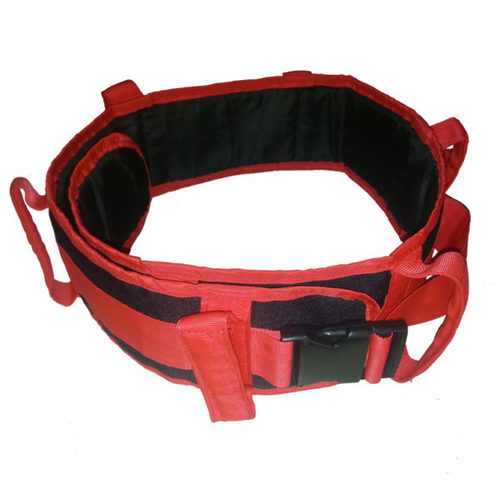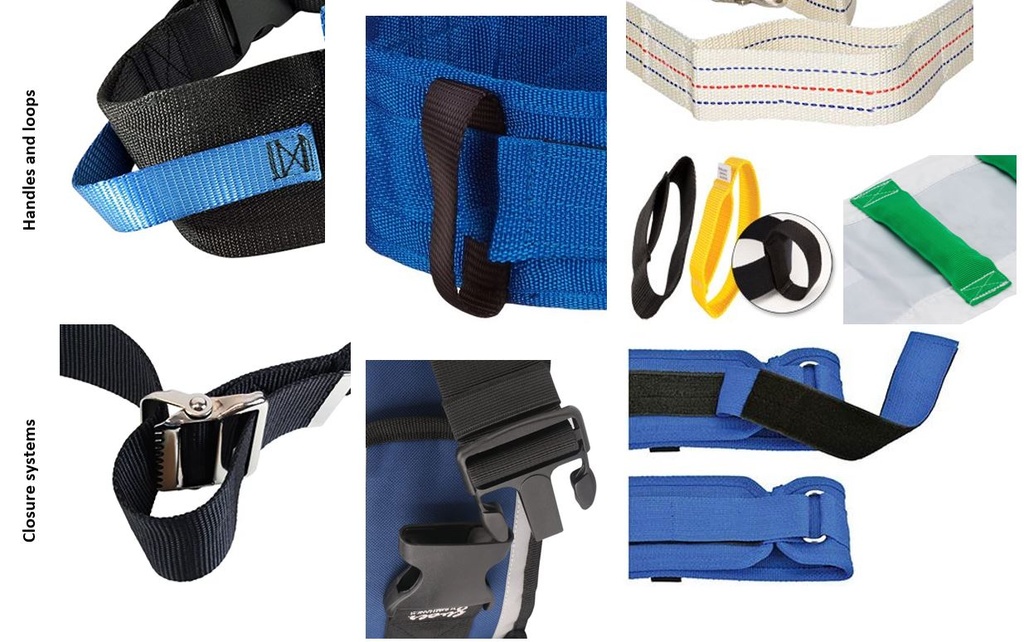TRANSFER BELT, with handles, large
Valid Article
TRANSFER / LIFTING / GAIT BELT
Definition
A device used to assist healthcare professionals or attending persons to physically move and lift a patient or a person with a disability (e.g. from the floor to a bed).
The device is typically made strong textile materials (e.g., nylon or canvas). This is a reusable device.
Synonym
gait belt, lifting belt
Specifications
Technical specifications
- Padded belt
- breathable fabric: woven cotton, canvas, or synthetic
- washable at 60°C
- Adjustable length
- Closure:
- quick-release plastic buckle or metal buckle (loop and teeth)
- velcro (loop and hook) closure
- Handles: located on the side and the back of the belt
- Vertical fixed handles: minimum 4
- Horizontal fixed handles: minimum 3
- For adult: large size
- Strong: can support up to 150 kg
- Adult large size:
- width: +/- 7 to 10 cm
- length: +/- 120 to 140 cm
Instructions for use
Help the patient into a sitting position and place the gait belt around the waist. Ensure that the buckle is positioned slightly off-center in the front to avoid discomfort for the patient.
Never put the belt directly on the skin. Always place it on the patient's clothes. If the patient is frail or thin, place a towel in between the belt and the patient's body, and then put the belt on.
Tighten the belt until it is snug, but make sure it is not too tight and uncomfortable. You should be able to slide two fingers in between the belt and the person's body.
Once the belt is secured safely, stand facing the patient, and bend your knees while keeping the back straight. Place your arms around the patient's waist and put your hand under the belt.
Once your grip is firm, straighten your knees while you hold the belt with one hand and place your other hand on the person's back.
Precautions for Use
Replace any belt that shows obvious signs of wear. Don't attempt to repair them, even if the necessary repairs seem fairly straightforward.






